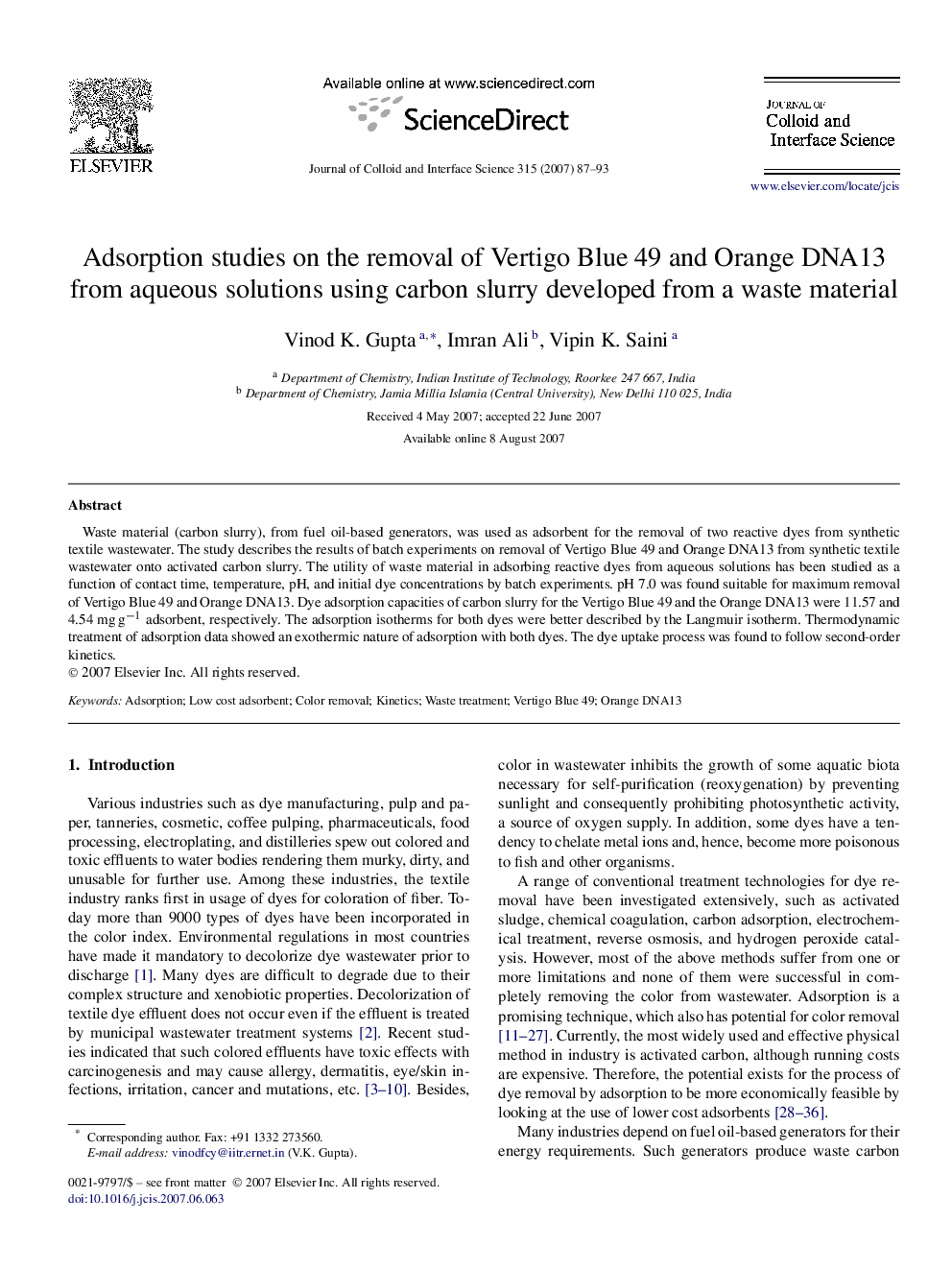| کد مقاله | کد نشریه | سال انتشار | مقاله انگلیسی | نسخه تمام متن |
|---|---|---|---|---|
| 612263 | 880694 | 2007 | 7 صفحه PDF | دانلود رایگان |

Waste material (carbon slurry), from fuel oil-based generators, was used as adsorbent for the removal of two reactive dyes from synthetic textile wastewater. The study describes the results of batch experiments on removal of Vertigo Blue 49 and Orange DNA13 from synthetic textile wastewater onto activated carbon slurry. The utility of waste material in adsorbing reactive dyes from aqueous solutions has been studied as a function of contact time, temperature, pH, and initial dye concentrations by batch experiments. pH 7.0 was found suitable for maximum removal of Vertigo Blue 49 and Orange DNA13. Dye adsorption capacities of carbon slurry for the Vertigo Blue 49 and the Orange DNA13 were 11.57 and 4.54 mg g−1 adsorbent, respectively. The adsorption isotherms for both dyes were better described by the Langmuir isotherm. Thermodynamic treatment of adsorption data showed an exothermic nature of adsorption with both dyes. The dye uptake process was found to follow second-order kinetics.
Effect of contact time on the adsorption of Vertigo Blue 49 and Orange DNA13 on carbon slurry (initial concentration: 100 mg L−1).Figure optionsDownload as PowerPoint slide
Journal: Journal of Colloid and Interface Science - Volume 315, Issue 1, 1 November 2007, Pages 87–93